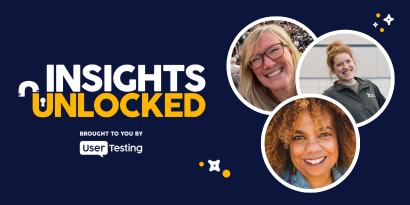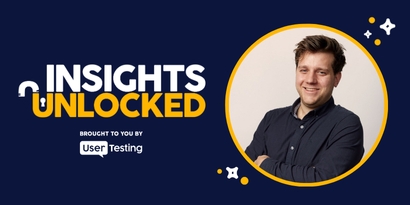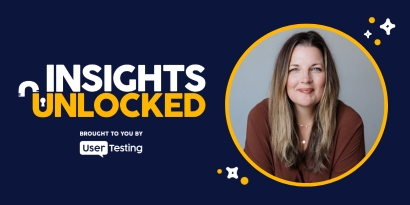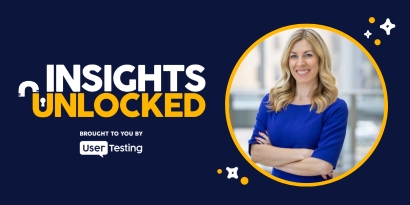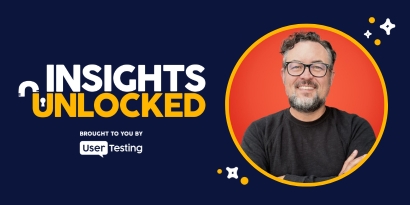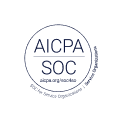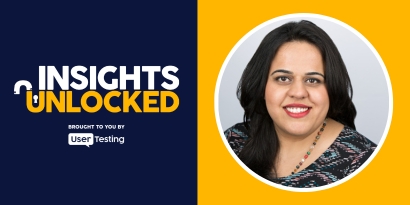
Episode 22 | November 15, 2021
Continuous discovery for customer-centric products
Learn how continuous discovery fuels customer-centric product development in this insightful episode with product discovery expert Teresa Torres.
How continuous discovery is reshaping customer-centric product development
"It’s not about having all the answers—it's about continuously evolving your understanding of the customer." That simple idea, shared by product discovery coach Teresa Torres, might just be the missing link in how we build products that actually make a difference.
In a fast-paced digital world where user expectations shift constantly, successful teams are embracing a mindset of continuous discovery to create products that solve real problems for real people. This human-centered approach is becoming the heartbeat of customer-centric product development—and Teresa Torres is leading the charge.
The customer disconnect in product development
Even the most well-intentioned product teams can lose touch with their users.
“There’s a gap between the daily activities we do and how customer-centric those are,” Teresa points out. “It’s simply because of business culture. We’re kind of swimming upstream.”
ON-DEMAND WEBINAR
Continuous discovery: transform your product development process
In this webinar, you'll learn:
- Learn what continuous discovery is and why it’s revolutionizing frameworks within product and design teams
- Discover practical frameworks for integrating continuous discovery into your workflow
- Explore how continuous discovery empowers you to build products that truly resonate with your users, driving engagement, retention, and revenue.
For years, product development has been dominated by deadlines, backlogs, and delivery cycles. Discovery—the part where we actually understand what users need—often gets sidelined, reduced to a one-off research sprint or a few stakeholder interviews. But that’s not enough anymore.
“Discovery represents the work we do to decide what to build,” Teresa explains. “And continuous discovery is about getting customer feedback on a frequent, ongoing basis to inform those decisions.”
What is continuous discovery?
At its core, continuous discovery is a practice of embedding customer learning into your product development process—every single week.
“You’re interviewing customers every week, running assumption tests every week, and synthesizing what you learn as you go,” Teresa says. “It’s about making your work visible and collaborative.”
This ongoing approach contrasts sharply with the traditional “big reveal” style of research that results in lengthy reports no one reads. Instead, teams use lightweight tools—like interview snapshots and opportunity solution trees—to stay aligned and act on what they’re learning in real time.
"We need to treat each individual customer as the unique person they are—and not overgeneralize in our synthesis." – Teresa Torres
How continuous discovery supports customer-centric product development
To build genuinely valuable products, product teams must move beyond assumptions and embed the customer voice at the heart of every decision. That’s where continuous discovery really shines.
Here’s how it supports a more customer-centric approach:
- Frequent engagement: Teams talk to users weekly, building empathy and context over time.
- Collaborative synthesis: Designers, product managers, and engineers align on insights together.
- Visual tools: Frameworks like the opportunity solution tree help connect user needs to business outcomes.
- Iterative mindset: Discovery and delivery happen in parallel, allowing for rapid experimentation.
As Teresa puts it, “When the whole team engages with customers together, they all become the voice of the customer.”
“Customer value and business value don’t have to be at odds. We can find ways to create both.” – Teresa Torres
Overcoming the biggest myths about product roles
One of the most compelling takeaways from the conversation is Teresa’s stance on the role of the product manager. Contrary to the popular “mini CEO” metaphor, she emphasizes a team-first approach.
“I don’t buy into the idea that the product manager is the be-all, end-all,” she says. “It’s too much for one person. Product managers should bring a business perspective, but the responsibility of discovery is shared across the team.”
This collaborative approach helps surface diverse insights and avoids the pitfalls of a single “voice of the customer.” When engineers and designers also participate in interviews, they hear things others might miss—technical feasibility, design nuances, or creative solutions.
Tools and templates for continuous discovery
Teresa’s book Continuous Discovery Habits introduces practical templates that support weekly discovery habits without overwhelming teams.
Some of the tools she recommends include:
- Interview snapshots: A one-page summary that captures key quotes, visual maps, and contextual details from each customer interview.
- Opportunity solution trees: A visual framework to map how customer needs connect to potential solutions and broader business outcomes.
- Assumption tests: Lightweight experiments to validate (or invalidate) key beliefs before committing development resources.
“The magic happens when synthesis and sharing become one activity,” Teresa notes. “If you wait to compile a report after 12 interviews, you’ll lose the nuance—and no one will read it anyway.”
“Show your work as you go. That’s what helps teams stay aligned, engaged, and focused on what matters most.” – Teresa Torres
The shift to a discovery-first mindset
Changing the way product teams work doesn’t happen overnight—but it doesn’t have to be all-or-nothing, either.
“You don’t have to be a full-tilt continuous discovery team to get value from this,” Teresa says. “You can start right now by increasing how often you talk to customers and making those insights visible.”
She emphasizes starting small and using whatever is within your control:
- Shadow a sales or support call.
- Recruit a customer for a quick Zoom interview.
- Use visual tools to capture and share insights with your team.
Over time, these habits build momentum—and trust.
“Once teams are equipped with the skills, they want to work this way,” she says. “It’s more fun, it’s more collaborative, and it’s more successful.”
From discovery to outcomes
Ultimately, continuous discovery isn’t just about listening—it’s about acting. And that means tying what you learn to measurable business goals.
Teresa encourages teams to define outcomes first, then work backward:
- Identify the customer needs (opportunities) that, if addressed, will move the needle.
- Prioritize based on how frequently those needs come up and how much impact they could have.
- Test multiple solutions before committing to build.
“We’re tasked with driving outcomes—like increasing retention or improving engagement,” Teresa says. “That’s business value. But to get there, we have to create customer value.”
“Every interview you do, every test you run, it’s like putting money in the bank. It compounds over time.” – Teresa Torres
Why now is the time for continuous discovery
With the explosion of tools that make customer feedback and experimentation easier than ever—from Zoom interviews to user testing platforms—there’s never been a better time to adopt continuous discovery.
“I really wish I could go back and be 22 again,” Teresa says with a laugh. “The product world looks radically different today. We have tools now that let you test a prototype in the morning and have customer feedback by the afternoon. That’s magical.”
And with the shift toward remote and hybrid work, digital collaboration is no longer a barrier—it’s the norm. That opens new opportunities for distributed teams to build together, learn together, and grow together.
Continuous discovery isn’t just a process—it’s a philosophy. One rooted in curiosity, empathy, and the belief that customer insights should drive every decision, not just the big ones.
Whether you’re a seasoned product leader or just starting your discovery journey, Teresa’s advice is simple: start small, start now, and stay curious.
“We’re at the beginning of a big shift,” Teresa says. “The good news is—you can start wherever you are.”
